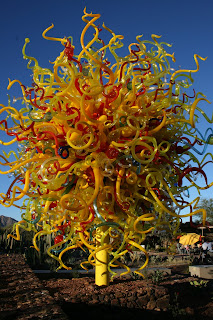Listening to the militant conservationists, you would get the impression that wild animals in general were on the verge of extinction. That pretty propaganda piece, the BBC Planet Earth, portrays a world where all the cute little cuddly creatures are disappearing. For a lot of species that well may be the case, but no one ever mentions that species have been disappearing for millions of years, many of which were likely cute and cuddly. The media leave strictly alone those species that not only are not on verge of extinction, but have extended their range and numbers because they can take advantage of the urban environment. Most of these animals are definitely not in cute or cuddly category, for example coyotes, cockroaches, scorpions, pigeons, rattlesnakes, gophers, not to mention the old standbys, rats and mice.
Take
coyotes for an example, these resilient animals have vastly
extended their range. They now inhabit such diverse ares as Nova
Scotia and
Florida. Coyotes are
definitely considered pests. It is undisputed that many (if not nearly all) of the signs you see around advertising for a lost cat or dog, are the result of coyote predation. It is not impossible to catch a coyote, but very, very difficult. We live with coyotes in our neighborhood. On a bike ride we saw two large coyotes standing the middle of a major street. When we approached they both ran, one continued down the same street we were riding on, running along a high wall that parallels the road. The coyote turned and ran up an eight foot wall, just like a cat, then stood at the top of the wall and looked at us, then jumped down into the backyard of a home. Despite intensive eradication efforts involving
killing over 400,000 of these animals every year, their populations continue to increase.
Hal the Central Park Coyote lived for two days in Central Park before being captured in 2006. It is interesting that the very active wildlife biologists have no idea how many coyotes live in my neighborhood. Sightings are not rare, but most people, I assume, think they are looking at a stray dog.
Another beneficiary of urban sprawl is the common pigeon. It not uncommon for pigeons to be scavenging on the local school campuses, eating a steady diet of the same thing eaten by the area's children. Like the children, the pigeons are obese, only taking to the air when approached within a few feet. There are over 97,000 Web sites for pigeon population control. It is always amusing to me to go into a high rise building here in Phoenix and see the spikes, electrical leads and other anti-pigeon measures, usually with a pigeon sitting on the ledge anyway.
Wikipedia deals with pigeons as "
Rock Pigeons." You guessed it, no one knows (or cares) how many pigeons there are in Phoenix or anywhere else for that matter.
If you would like an amusing activity apply for a federal grant to study pigeons unless you can tie the study into West Nile Virus or some other disease.
What about the rest of the denizens of our urban world in Arizona? Scorpions, definitely not endangered. Rats and mice, not a common as some places in the U.S. but still not about to disappear any time soon. That leave cockroaches. You have to come to Phoenix or some other warm climate area to really appreciate how many cockroaches there are in the world. Try opening a sewer manhole sometime. The only good thing about scorpions (there might be other good things but I haven't spent much time thinking about the good things about scorpions) is that when you have scorpions they eat the cockroaches.
OK, that leaves rattlesnakes. I really shouldn't have included them in this urban tirade, but they are one of the most
recognizable "dangerous" animals in Arizona and elsewhere, but what is surprising is that no one seems to know how many rattlesnakes there are.
One study concluded that "The survey teams systematically searched areas that were suspected to be good habitat for the species and recorded basic statistics for each rattlesnake encountered. These efforts resulted in the identification of a relatively small number of Arizona black rattlesnakes. For this reason, it was not possible for scientists to determine specific population numbers for individual park units."
I could have included a lot of other animals that are far from any endangered species list, like mosquitoes. But I assume no one is counting them either.
My point? Ecological hand wringing is sometimes pretty selective.













